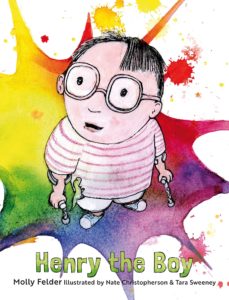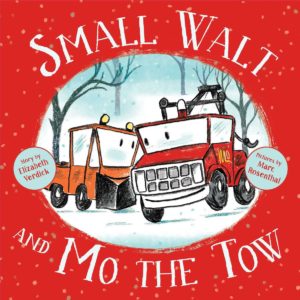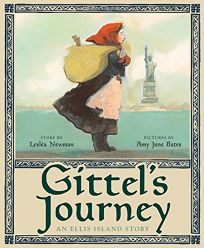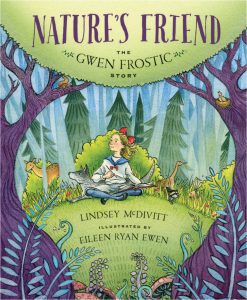Soar High, Dragonfly!
Author: Sheri Mabry Bestor
Illustrator: Jonny Lambert
Sleeping Bear Press
14 March 2019
32 pages
This month’s PB review is by Ryan G. Van Cleave (Top Science Buff at Only Picture Books) and OPB review newcomer, freelance artist Austin McKinley.
–Ryan’s Review of the Writing–
Soar High, Dragonfly!, the new picture book by Sheri Mabry Bestor (author of Good Trick Walking Stick), gives readers insight into the world of dragonflies with just enough science to work into STEM curricula.
The text works in two ways–the large-font words at the top of each page make up the lyrical story of a dragonfly’s life cycle. That’s where we find techniques such as onomatopoeia where we hear the POP POP POP of a dragonfly laying eggs onto the water surface. It’s there that readers encounter strong words (squirts, thrusts, captures, gulp!) that make the moments come alive.
But the differently-colored words–generally found at the bottom of many of the pages–work like a sidebar. The supplementary text there is informative and very straightforward, such as “Dragonfly eggs are very small and have no way to protect themselves. Many are eaten by fish, frogs, and other insects before they have a chance to hatch.” Science-reluctant readers could potentially skip those parts and still find much to enjoy from this book, though without a doubt, this information adds to the overall experience.
While the sidebar-style parts give this book depth, a robust backmatter section might’ve given this book a little extra oomph that so many nonfiction titles have today. Regardless, it’s a compelling title made even more so by the vibrant art that makes the “insect hero” of this story come alive.
4 out of 5 pencils
– Austin’s Review of the Illustrations–
Prolific UK illustrator Jonny Lambert graces the book with lustrous, intricately cut and collage-textured compositions. A comparison to Eric Carle’s 1969 classic The Very Hungry Caterpillar would be apt, because of the saturated palette and rich patterns, but also a disservice because Lambert brings his own expert and playful animator’s draftsmanship to bear, creating a warmly familiar but entirely distinct sensibility—and an order of magnitude more detail.
In a career spanning over 300 titles, Lambert has interpreted almost every member of the animal kingdom. Although only the second collaboration with the author of Soar High Dragonfly, this is a rare example of Lambert’s insect renderings which he nevertheless approaches with adroit sensitivity. Even a brown, molting nymph seems friendly and endearing, while maintaining the book’s blend of elementary simplification and scientific accuracy.
Amazingly in the digital age, the technique is a traditional one, involving—as the artist says—layers of gouache “tickled” through individual stencils derived from hand-drawn designs, and finished with colored pencil. His artistic attention seems to be lavished on every aspect of the process, from playful character creation to painstaking execution.
The book’s broad cast of predators and prey play out their primal drama amid a sumptuous environment of swirling shallow water and lush aquatic plant life, and Lambert’s spacious layouts and text interactions underscore the joy of flight embraced by a jewel-toned master of his medium.
4 out of 5 crayons
 Austin McKinley’s work crosses many different forms of media, from comic books and cartooning to short film directing, video production, video games, screenplays, novels and novellas. Most recently he produced, shot and appeared in the award-winning feature documentary “The New 8‑Bit Heroes” alongside director Joe Granato, and created “By The Numbers,” a feature-length abstract animation representing cinematic structure. He is the author of several works and collections through his company, Flying Car. His comic illustrations have also been published by Image Shadowline, Devil’s Due/1st Comics, Alias/Blue Water Press, Avatar, Boom!, Blue King Studios, and FC9. He wrote and illustrated “Squareasota,” a weekly cartoon in the Sarasota Herald-Tribune for seven years. He lives and works in Sarasota.
Austin McKinley’s work crosses many different forms of media, from comic books and cartooning to short film directing, video production, video games, screenplays, novels and novellas. Most recently he produced, shot and appeared in the award-winning feature documentary “The New 8‑Bit Heroes” alongside director Joe Granato, and created “By The Numbers,” a feature-length abstract animation representing cinematic structure. He is the author of several works and collections through his company, Flying Car. His comic illustrations have also been published by Image Shadowline, Devil’s Due/1st Comics, Alias/Blue Water Press, Avatar, Boom!, Blue King Studios, and FC9. He wrote and illustrated “Squareasota,” a weekly cartoon in the Sarasota Herald-Tribune for seven years. He lives and works in Sarasota.

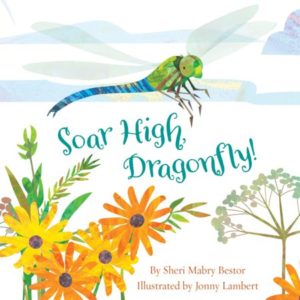
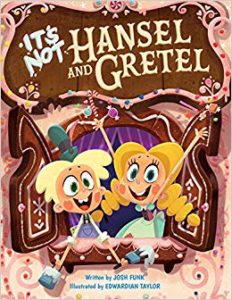
 David C. Gardner is an award-winning illustrator and visual development artist. A former artist for Walt Disney Animation Studios, he has illustrated numerous picture books, including his latest from Sleeping Bear Press,
David C. Gardner is an award-winning illustrator and visual development artist. A former artist for Walt Disney Animation Studios, he has illustrated numerous picture books, including his latest from Sleeping Bear Press, 